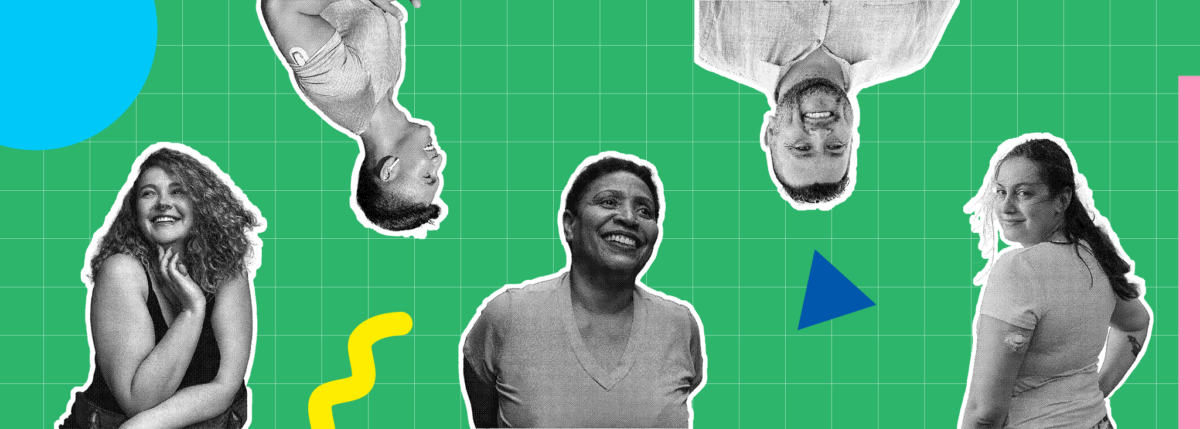Using My Passion for Health and Wellness to Adjust to Life With Type 2 Diabetes
Learning how type 2 diabetes (T2D) impacts your relationship with food and exercise is an experience that never ends. When you’re diagnosed, you learn that food and exercise are two of the most important ways to manage your glucose levels. Along with trying to accept your new diagnosis, you’re also likely trying to figure out where to start on your wellness journey. Our Beyond Type 2 Canada community member, Ria, shares her T2D story and how she used her passion for health and wellness to adjust to life with type 2 diabetes.
Ria Smith-Williams, fitness enthusiast and certified personal trainer known as The Healthy Diabetic on social media, has been living with type 2 diabetes for over 10 years. Prior to her diagnosis, she was always in the gym and being careful with her eating regimen. However, with a family history of gestational diabetes and after developing it herself during her two pregnancies—the first of which was high-risk—she was diagnosed with type 2 diabetes years later.
“During my first pregnancy, my doctor told me I had gestational diabetes and my numbers were through the roof, reading at 33 mmol/L,” says Ria. “She said I’d likely develop type 2 diabetes later on, but I was skeptical because I was weightlifting, running and had 12% body fat, so diabetes was not in the realm of my thoughts.”
What T2D looks like
At the time of her T2D diagnosis, she didn’t believe it at first because of the stigma of what a person with diabetes is supposed to look like. With time, she accepted that diabetes doesn’t have a particular “look.”
“Over the years, I’ve gone to different doctors and one who said I didn’t ‘look’ like a diabetic. What is a diabetic supposed to look like?” recalls Ria. “But I was still in this stage of my journey where I was looking for ways to reverse it. When he learned that I had T2D, he mentioned that previous medical history predisposed me to develop it and this was my life now.”
The moment Ria accepted her diagnosis was when she ended up in the hospital multiple times due to high blood glucose levels, and the nurse told her she’d see her in their facility again—soon.
“I remember feeling embarrassed that I was so out of control and ending up in the hospital several times,” says Ria. “It was at that moment I told myself this disease wasn’t going anywhere and I need to figure out the best way to manage it, so I never end up in the hospital for an uncontrolled high again.”
Using her love for fitness + wellness
Ria learned to use an effective strategy: use what you know to get where you want to be. She knew she’s the type of person that could get up early to hit the gym to lift weights, go on long walks to de-stress and focus on mobility training. Though she wouldn’t describe herself as a foodie, she knew she enjoyed intermittent fasting and delicious chocolate protein shakes to satisfy her sweet tooth.
One of her philosophies surrounding health and wellness is making the time for physical activity, even if her interests in the types of exercises have changed or if she’s on a short schedule.
“When I was younger, I was satisfied with going to the gym, lifting weights and that would be it,” says Ria. “Now that I’m in my 50s, I focus on mobility training to protect and strengthen my joints. If I don’t make it to the gym in the morning, I will make time to at least go for an hour-long walk that day. It’s important I set these rules for myself to keep me grounded and consistent. Next, I’ll be incorporating pilates and yoga into my routine.”
She added that walking is an underrated exercise and ideal for someone with diabetes who needs to incorporate a simple and effective way to be active. Walking isn’t just good for your physical health, it’s good for your mental wellbeing as well.
“I try to encourage everyone to go for a walk, even if it’s just for your mental health,” says Ria. “It’s so important, especially if you’re dealing with diabetes burnout. Walking meditations can do so much for you to de-stress. Also, it’s better to start here rather than lead with an all-or-nothing mentality. Start small with a walk around the block or for 15 minutes. You’ll be surprised how 15 minutes can turn into 30 minutes and how you can build momentum with your routine. Start small and don’t worry about comparing yourself to others.”
Recently, Ria started taking long-acting insulin to address elevated glucose levels. The biggest challenge she’s faced since starting it is dealing with hypoglycemia, especially at night or after exercise. Fortunately, she carries glucagon if she has an emergency severe low situation. Overall, she just considers this adjustment as the natural progression of what it means to have diabetes and doesn’t see it as a sign of her not doing enough to manage it.
Taking small steps for big rewards
Today, her outlook on life with diabetes is positive. But as with anything with diabetes, or just life, in general, Ria will continue to address any change or challenge with the same foundation that she uses for fitness—take small steps and you’ll see big rewards, which is having a positive outlook on the longevity and quality of your life.





